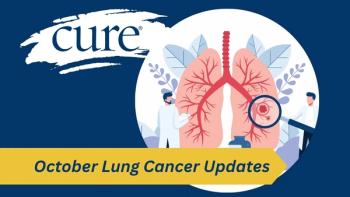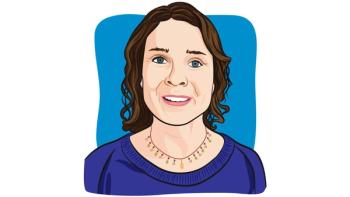
Childhood Lymphoma Patients and Their Doctors Must Anticipate Late Effects of Treatment
Researchers gathered at the annual meeting of the American Society of Hematology to learn about survivorship issues and the late effects their patients encounter years, even decades, after therapy.
Although much of the information presented at the annual meeting of the American Society of Hematology focused on the results of studies of potential new treatments, researchers also gathered to learn about survivorship issues and the late effects their patients encounter years, even decades, after therapy.
Leukemia and lymphoma survivors, specifically, can encounter issues 10 to 15 years after treatment, including secondary cancers, cardiac toxicity, bone degradation, cognitive dysfunction, dental issues and endocrine problems.
Smita Bhatia, an oncologist and one of the country’s leading researchers in childhood cancer survivorship, moderated a panel of experts who presented information on late-effect issues related to Hodgkin lymphoma treatment and transplantation.
While awareness of and research about survivorship issues have grown over the past decade, Bhatia says that’s not enough. The length of time between treatment completion and these late effects, paired with the lack of follow up and knowledge by primary care physicians, mean that many survivors are caught unaware when these issues develop.
“One goal is to make the patients advocates of their own care, keep them in follow up,” she says, in addition to increase the knowledge base of healthcare providers, provide them standardized screening tools instead of requiring them to pore over huge documents to find exactly what each patient needs. “And then there are studies where we need to do interventions. We need to intervene with therapeutics exposures and behavioral interventions to prevent these complications.”
Andrea Ng, a radiation oncologist at Brigham and Women’s Hospital in Boston, explained that patients with Hodgkin lymphoma, especially those diagnosed as children and young adults, are at great risk for secondary cancers and cardiac toxicity . In fact, breast and lung cancers are the two leading causes of death for these long-term survivors, primarily due to radiation therapy and alkylating chemotherapy. This risk remains high even 25 years after diagnosis. Fortunately, radiation techniques have greatly improved and doses of chemotherapy have been toned down, so the risk of these effects in current patients may not be as high.
“It’s important to recognize that many of the reported late effects in HL survivors are based on patients treated with chemotherapy regimens and radiotherapy fields and doses that are no longer used in the present day,” Ng wrote in the education program book that accompanied the meeting . For that reason, survivors treated years ago may have different follow up and screening recommendations than patients who recently finished treatment.
[Read “
In her presentation, Ng reinforced screening strategies and advocated smoking cessation within this population. In the case of lung cancer, the secondary cancer risk is directly related to radiation dose, along with the number of cycles of alkylating therapy. Smoking further contributes to that risk—and when a history of high-dose radiation, alkylating therapy and tobacco are combined, the risk of lung cancer increases 49-fold.
There are current recommendations for long-term Hodgkin lymphoma survivors, including guidelines from the National Comprehensive Cancer Network and the Childhood Oncology Group. Research will continue to fine tune these recommendations, especially for newly minted survivors.
Bhatia, who will serve as director of the newly created Institute for Cancer Outcomes and Survivorship at the University of Alabama Birmingham School of Medicine starting in January , noted that current research is also focused on interpreting the genetic fingerprint of patients to determine their risk of certain long-term side effects. If it’s possible to identify those patients who are at higher risk of certain cancers, cardiac toxicity and other issues, perhaps a lower dose or alternate treatment could be available.
Indeed, in 2012, Bhatia presented research that showed genetic susceptibility for cardiac toxicity when treated with the alkylating chemotherapy anthracycline in patients who had undergone a bone marrow transplant . With additional research and follow up, this data could be used to tailor screening strategies or medical intervention for these patients at highest risk.
For more on late effects, read CURE’s article “





